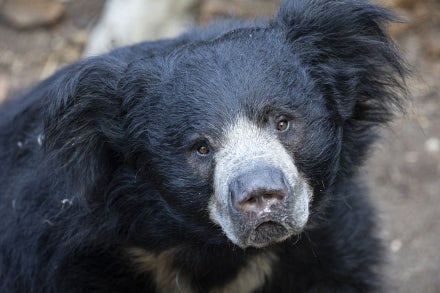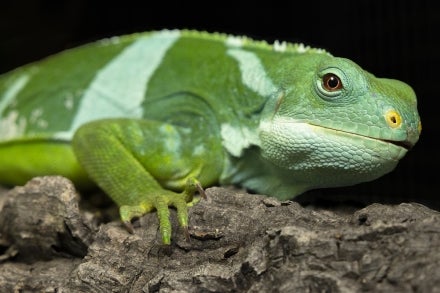Image

 Fossas estimated
to remain on Madagascar
Fossas estimated
to remain on Madagascar
 PRECIOUS PUP
PRECIOUS PUPAt birth, fossa pups are kitten-sized and mom keeps them safely stowed in the den for several weeks. With age, their appetite grows along with their curiosity and agility.[/caption]
 Fossa life span in years in zoos
Fossa life span in years in zoos
Who’s a Fossa?
Most people have never seen a fossa up close, much less realized what it is. Resembling a long-bodied, catlike dog with a hint of weasel, this carnivorous mammal endemic to Madagascar would stop anyone in their tracks, if they could see it. As a crafty apex predator, the fossa hunts by day or night, often high in the trees in search of its favorite prey: lemurs. But they also take down rodents, birds, fish, and even wild pigs. An ambush hunter, the stealthy fossa can outmaneuver the most nimble arboreal creatures using its long tail for balance, strong claws and forelimbs to capture prey, and its sharp teeth to finish the job. It can reach 6 feet in length—with half of that being its tail—and weigh over 20 pounds. [caption id="attachment_124152" align="aligncenter" width="800"] UP HIGH THERE!
UP HIGH THERE!Like all baby animals, fossa pups eagerly explore their environment, testing boundaries and honing their skills.[/caption] While little is known about the fossa, largely due to their sparse numbers—they are listed as Vulnerable by the International Union for Conservation of Nature and continue to decline—and remote forest habitat, what is known about them is exceptional. Once classified as a type of cat, we now know that the fossa is related to the mongoose. These intelligent, solitary animals were once thought to be nocturnal, but it has since been revealed that they are flexible in habit, napping and hunting when they choose. They can travel up to 16 miles a day. Fossas favor forested landscapes and, in fact, they can scamper down a tree trunk headfirst! They walk flat-footed, like a bear or a human, a form of locomotion called “plantigrade.” Mothers with pups, and brief breeding encounters in September and October are the only exceptions to their solitary existence. However, in 2009, scientists observed three male fossas cooperatively hunting a sifaka for 45 minutes. That could have been residual behavior from millions of years ago, when now-extinct lemurs were as big as horses, and cooperation was required to hunt them successfully. [caption id="attachment_124154" align="aligncenter" width="1000"]
 CARNIVORE KING
CARNIVORE KING The fossa is critical to the ecosystems of Madagascar, keeping prey species in check.[/caption]
 Fossa pups born at the Zoo over
the years
Fossa pups born at the Zoo over
the years
 MOTHER KNOWS BEST
MOTHER KNOWS BESTTalking back to mom is never a good idea.[/caption]
 San Diego Zoo’s fossas are part of the Association of Zoos and Aquariums’ Species Survival Plan (SSP).
San Diego Zoo’s fossas are part of the Association of Zoos and Aquariums’ Species Survival Plan (SSP).
Zoo Pups
At the Zoo, keepers go to great lengths to keep the fossas engaged and on their game. “We provide them a varied diet of rabbits, mice, meat, and bones, which we disperse throughout their exhibit at different times of the day throughout the week,” said Lacy. She explained how they save up some daily calories for enrichment items like squid, trout, or chicken baby food. “The pups love smelt, but mom not so much. For Miles, baby food is a high-value item, and we use it when training her.” At around four months of age, one of the pups finally took food through the mesh from Lacy. “It was very exciting!” she said, adding that it is always surprising what they like and how they behave. For instance, a hollowed-out log in the exhibit near Zoo guests? No problem, they love it, despite the proximity to people. Palm fronds provide hours of fun, with the pups climbing and sliding on them. [caption id="attachment_124156" align="aligncenter" width="1000"] FROLICKING FUN
FROLICKING FUNPups must learn early the vital skill of tree climbing—and hanging.[/caption]
 Fossa pups currently at the Zoo
Fossa pups currently at the Zoo




